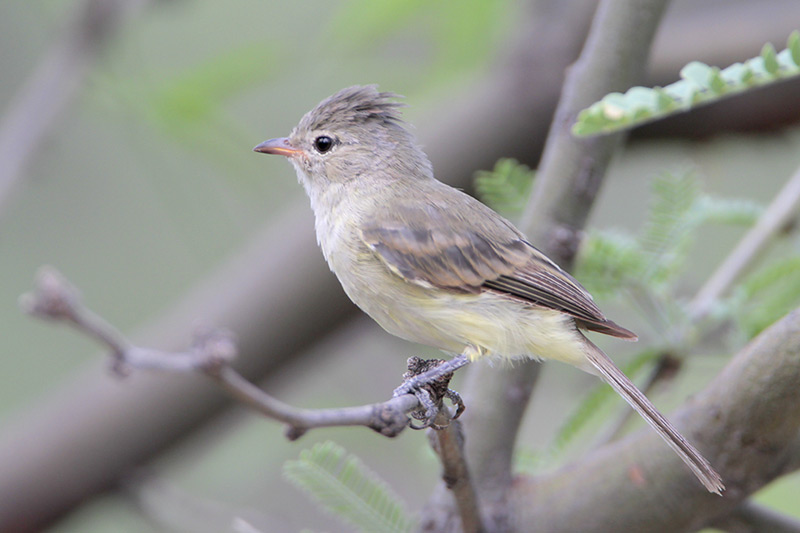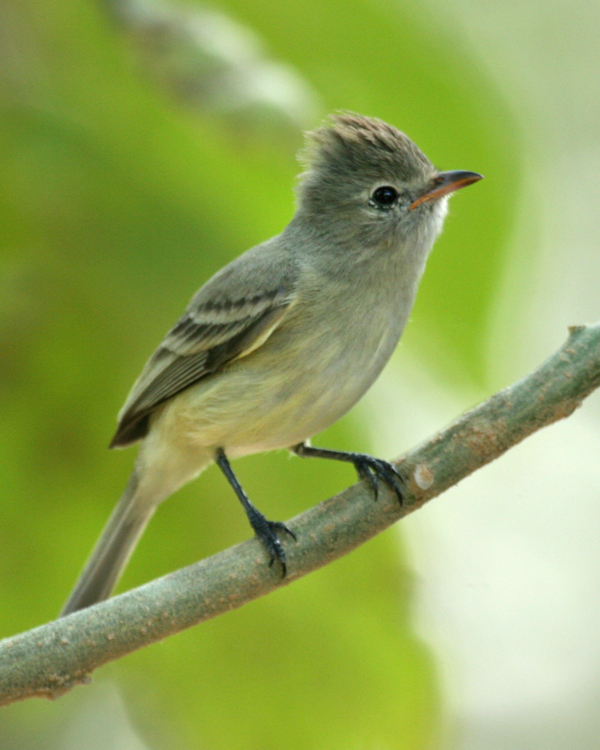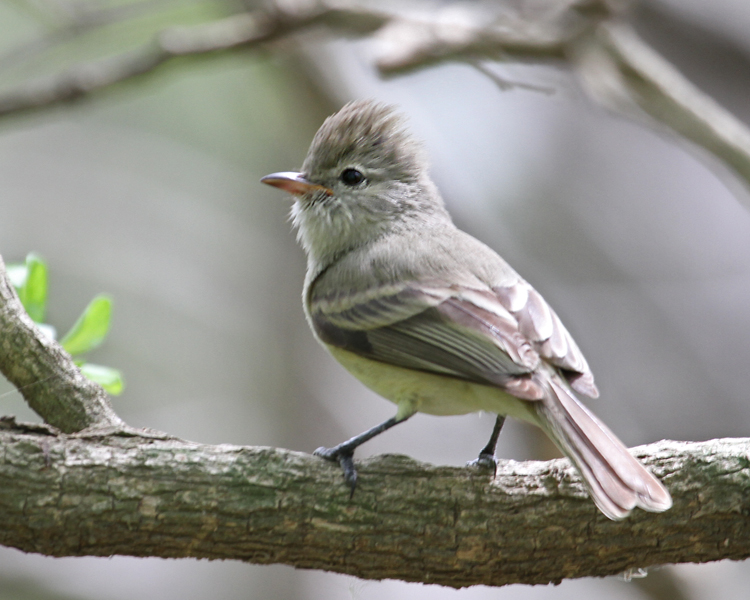
Camptostoma imberbe
SUBFAMILY
Elaeniinae
TAXONOMY
Camptostoma imberbe Slater, 1839, San Andres Tuxtla, Veracruz,
Mexico. Monotypic.
OTHER COMMON NAMES
English: Northern beardless flycatcher; French: Tyranneau imberbe;
German: Chaparral-Fliegenstecher; Spanish: Piojito
Norteсo.
PHYSICAL CHARACTERISTICS
Length is 4.5 in (11.5 cm); perches in very upright posture.
Plumage includes a gray crown with a bushy crest, gray-olive
upperparts, grayish brown wings, and white or pale yellow underparts.
Bill is small and slightly curved, with brown tip and
creamy pink base.
DISTRIBUTION
From southern Arizona and Texas to Costa Rica. More common
in the southern half of its range.
HABITAT
Low woods, mesquite, stream thickets, brush, lower canyons.
BEHAVIOR
Lives singly or in pairs. Often wags tail while perching. Song is
a high, thin whistle “peert!” or “pee-yerp!” Also sings three or
more down-slurred notes “dee, dee, dee, dee.”
FEEDING ECOLOGY AND DIET
Hawks insects in midair. Also gleans insects form twigs and
leaves and takes berries.
REPRODUCTIVE BIOLOGY
Breeds monogamously once or twice a year. Nest is spherical,
built by female, and located on the outer branches of a deciduous
tree. Clutch is one to three eggs, incubated by female for
undetermined time; age of young at first flight also unknown.
CONSERVATION STATUS
Not threatened, though some populations declining with loss
of streamside habitat, possibly due to cattle grazing.
SIGNIFICANCE TO HUMANS
None known.
Other popular Animals
Photo Gallery of - Northern beardless-tyrannulet




 Animalia Life
Animalia Life